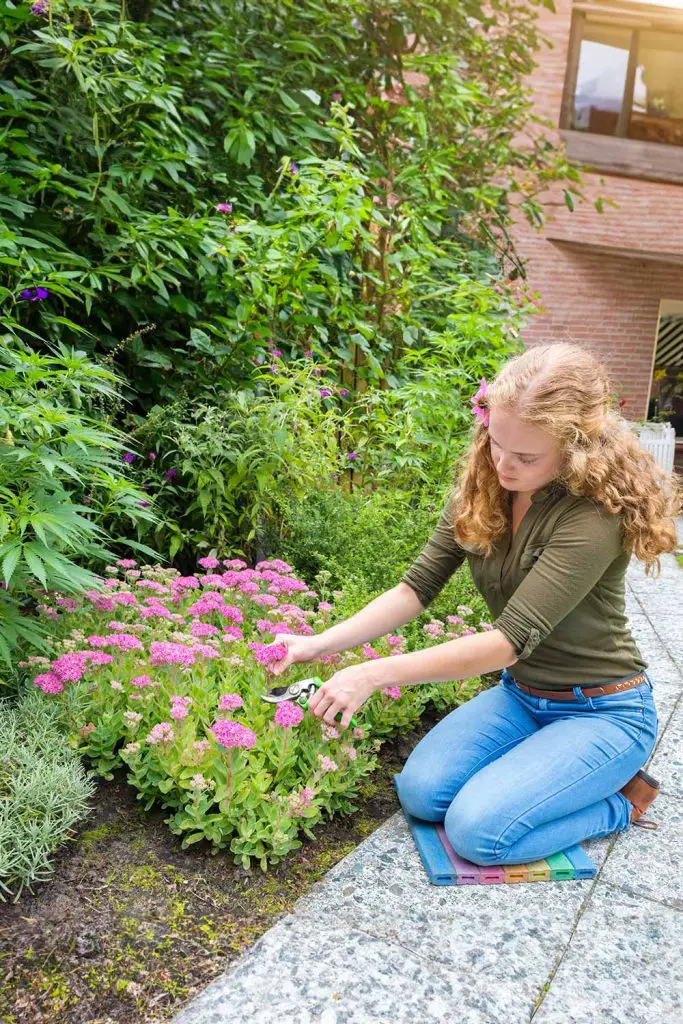12 Perennials to Prune Now for a Late-Season Bloom Boost!

As summer draws to a close, many gardeners may assume their flower beds are winding down for the year. But August doesn’t have to mark the end of your garden’s vibrant displays!
With a little bit of strategic pruning, you can encourage many perennial plants to put out a fresh burst of flowers in the late season. By cutting back at the right time, you’re giving your plants the signal to produce new growth and blooms, extending their flowering period well into autumn.
Here’s a detailed guide on 12 popular perennials you should prune in August for that much-needed late flower flush. These plants, once trimmed and cared for, will reward you with an extended season of color and beauty.
1. Geranium (Cranesbill)
Why prune in August: Geraniums are a workhorse in the garden, offering months of bloom. By August, they can begin to look leggy and tired, but cutting them back by about a third will encourage fresh growth and potentially a new round of flowers.
How to prune: Use sharp shears to trim back the flowering stems, removing any spent blooms and dead foliage. Be sure to water well and apply a light fertilizer afterward to give your geraniums the energy they need to recover quickly.
2. Nepeta (Catmint)
Why prune in August: Nepeta has a long flowering period, but by late summer, its blooms may begin to dwindle. Cutting it back by half can rejuvenate the plant and stimulate new flower spikes.
How to prune: Shear back the entire plant to about half its height. Don’t worry if it looks a little bare; catmint bounces back quickly and often provides a second flush of flowers before the first frost.
3. Salvia (Perennial Sage)
Why prune in August: Salvias are known for their prolific early-summer blooms, but they can go dormant in midsummer. By cutting them back in August, you can prompt a late-summer resurgence of blooms.
How to prune: Trim back flower spikes to encourage side shoots. Cut the stems down by at least one-third, especially if they’re starting to look leggy. Make sure to remove any dead or faded blooms.
4. Coreopsis
Why prune in August: Coreopsis tends to become straggly after a season of blooms. Pruning in August not only tidies up the plant but also encourages a fresh round of flowers.
How to prune: Cut back the entire plant by about one-third to one-half its size. This helps to remove spent blooms and encourages compact, healthy growth. Coreopsis responds well to this treatment and will often bloom again in a matter of weeks.
5. Shasta Daisy (Leucanthemum)
Why prune in August: Shasta daisies are classic summer bloomers, but once their initial flush of flowers fades, they can become lanky and unattractive. Pruning them can help trigger new flowers before autumn arrives.
How to prune: After the first wave of blooms, cut back the flower stems to about half their height. Remove any dead or yellowing foliage to tidy the plant up. Water deeply after pruning to help support new growth.
6. Phlox
Why prune in August: Garden phlox is a mid-summer favorite, but by August, it can begin to lose its luster. Trimming it back can encourage more blooms and reduce disease risk, especially mildew, which can affect phlox in humid weather.
How to prune: Cut back the stems by one-third to half their height after the first round of flowers fades. Deadhead any spent blooms to encourage continuous blooming. Keep an eye on airflow around the plant to prevent mildew.
7. Veronica (Speedwell)
Why prune in August: Veronica produces beautiful spikes of flowers, but after their summer show, they can begin to fade. Pruning in August ensures they keep providing interest well into fall.
How to prune: Cut back faded flower spikes to just above a leaf node. You can also trim the whole plant by about one-third to promote bushier growth and potentially another round of flowers.
8. Echinacea (Coneflower)
Why prune in August: Echinacea naturally slows down its blooming in late summer, but deadheading and light pruning can coax out additional blooms before the season ends.
How to prune: Remove spent flowers by cutting back the flowering stems to a lower node. You can also shear back the whole plant by a third if it’s starting to look tired. This will encourage new growth and potential reblooming, especially in warmer climates.
9. Helenium (Sneezeweed)
Why prune in August: Helenium adds late-summer and fall color, but by cutting back in August, you can encourage it to branch out and bloom more vigorously as the season progresses.
How to prune: Cut the plant back by a third to stimulate fresh growth and more blooms. Be sure to remove any dead or faded flowers to keep the plant looking its best and to encourage continuous flowering.
10. Penstemon
Why prune in August: Penstemons are hardy perennials that will often flower again if pruned at the right time. August pruning encourages a second flush of flowers and helps maintain the plant’s shape.
How to prune: Cut back spent flower stems and trim the entire plant by about one-third. This helps encourage more blooms and keeps the plant compact and tidy through the late summer months.
11. Gaillardia (Blanket Flower)
Why prune in August: Blanket flowers are robust bloomers, but after a few months, their vibrant flowers can fade. By giving them a light prune in August, you can extend their flowering into autumn.
How to prune: Remove faded flowers by deadheading regularly. If the plant is becoming too tall or leggy, cut it back by one-third to encourage fresh growth and new blooms. Gaillardia loves sun and warmth, so it often thrives after pruning.
12. Rudbeckia (Black-eyed Susan)
Why prune in August: Rudbeckias are tough, long-blooming perennials, but deadheading and light pruning can extend their bloom period even further.
How to prune: Deadhead regularly by removing spent flowers. If the plant is starting to look tired, you can cut back the entire plant by about one-third to encourage new blooms and maintain a neat, compact shape.
Bonus Tips for Late-Season Perennial Care
- Water Wisely: After pruning, ensure your perennials get plenty of water. Pruning can be stressful for plants, so extra hydration will help them bounce back more quickly.
- Fertilize: A light application of a balanced, slow-release fertilizer after pruning will encourage new growth and flower production. However, be careful not to over-fertilize, as this can result in lots of leafy growth and fewer blooms.
- Mulch: After you’ve pruned, adding a layer of organic mulch can help retain moisture, suppress weeds, and protect the plant’s root system as it regrows.
- Pest Watch: Late summer can be a time when pests are more active, so keep an eye out for any signs of trouble. Inspect plants regularly and address any pest issues early.
- Consider Division: For perennials that seem overcrowded or have decreased flower production over the years, late summer and early fall can be a great time to divide them. This encourages stronger growth and more blooms in the following seasons.
With just a bit of effort in August, you can help your garden’s perennials reward you with a vibrant late-season display of flowers. By carefully pruning and maintaining these plants, you not only extend their blooming periods but also keep your garden looking tidy and fresh as summer fades into fall.
Try these tips with the 12 perennials listed above, and you’ll be amazed at how much color and life you can coax from your garden, even when the days start to shorten. Happy gardening! 🌼
Feel free to adjust the details based on your region and plant varieties, but this method works well across many temperate climates and gardening zones.

More interesting articles you may be interested in reading:

